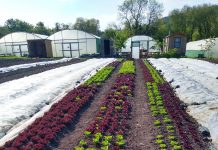This is a gorgeous time of year, harvesting the fruits of your labours.
Apples and pears are often confused by a hot few summer months, and some have dropped early while the rest of the crop is still on the tree.
We favour late maturing varieties because they store better into the winter. To eat straight away, pick when they have a yellowish hue. To store, pick when still green and the stalk snaps easily when you lift the fruit. All fruit tastes best when freshly picked, as the blackbirds will tell you, but storage saves you having to scoff the lot now.
Professional pear growers store their crop using expensive and precisely controlled climate control, which we amateurs don’t have. Generally, the colder your store, the better. We have a tree in an exposed spot that produces small pears ripe to eat much later, whereas our cordons trained against a hot wall are ripe much earlier.
Apples are a big subject, with so many varieties, all of which do better on different soils and store differently. The really late apples, which keep until spring, never seem to taste so good. Spartan is my favourite with white and sweet flesh that keeps crunchy until February in a cold winter. Kidds Orange, as with many cox types, has great flavours until Hogmanay.
Before the first frost bring winter squash indoors to decorate your house until eaten by next May. They are best kept dry and cool, like onions and garlic.
Some people store winter cabbage, carrots and celeriac indoors. This is horses for courses, as they definitely lose taste, but if left outdoors they get eaten by the same wildlife that are then in prime condition ready to eat next spring’s plantings.
Garlic, onions and broad beans seem to grow best for us from a late October or November sowing, but if your garden is in a cold spot, earlier may be better. Indoors you can sow carrots to harvest next spring—keep the soil moist. Autumn King does us well in spite of its name, and tastes so good. And why did the fortune teller give up his job? Because he could see no future in it.








